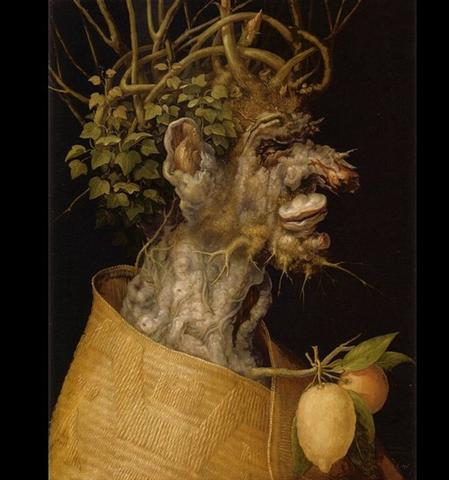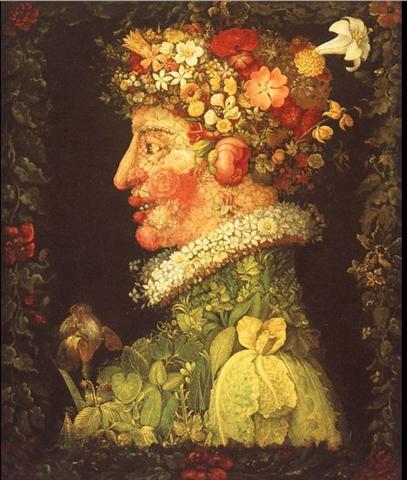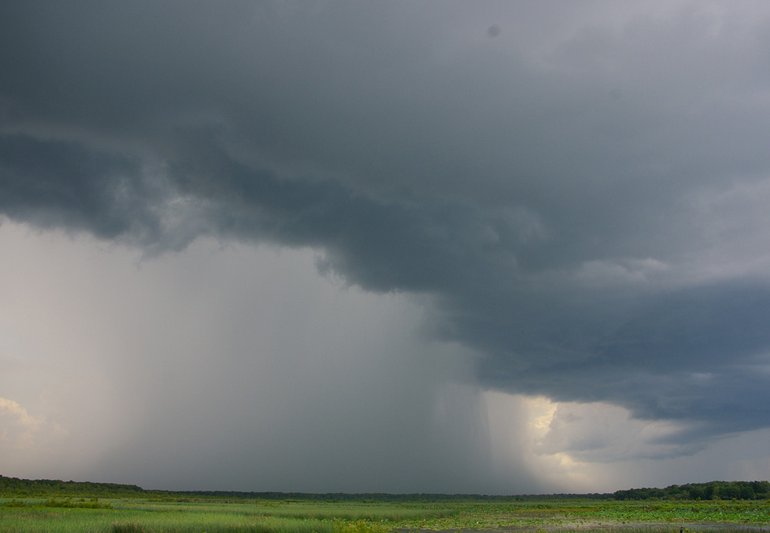The quartet of oho te vae glyphs are in line Ca12 and we should now return in order to concentrate on what follows in the next line, viz. reasonably a description of arriving, of 'birth'. Apparently the end of February gave room for birth (= life, light) when my 'death star', Matar ('from Al Sa'd al Matar, the Fourtunate Rain') rose heliacally:
Perhaps Metoro's koia ra kua oho means that the state of Mother Earth together with Sun (koia ra) was leaving (kua oho) with glyph Ca13-6, allowing the living spring spirit (manu rere) to return in 13-7. From all the number signs and other circumstances position 13-7 must be alluding to May 17. In manzil day 290 the 'Fishy' (winter) time was at left (cfr the fins instead of legs in Ca13-4--5) and Metoro said tagata ma te kihikihi, 'a completed counting of the Winter Man with only his grey ashes' (kihikihi) ahead. Archimboldo has depicted him thus:
The revolving man in Ca13-5 is positioned 63 (9 weeks) days counted beyond December 31 (reminding us of those 63 days needed to reach the RA days in the G text). The 4 last stars of Piscis Austrinus could each have governed one of the 4 days leading up to day 350 counted from March 21 (in an ordinary year). March 1 in an ordinary year is day 60. The next 4 days could therefore be said to belong at the beginning of next cycle. They could be like 4 days of birth (alluding to the 4 'Bacabs' raising the sky roof). The tail end of Piscis Austrinus perhaps indicates the end of the previous cycle and its front the origin of something new:
Fomalhaut is in the fluid from the Urn just in front of the open upside down fish mouth, while γ and δ are like the nostrils of the fish. I guess Hevelius meant the 'nostril stars' represented the last part of winter, while Fomalhaut - being in front - represented the beginning of the year in leaf. Archimboldo's picture of the Spring Man:
I cannot find π Piscis Austrini in the drawing of Hevelius, but perhaps he saw it as a star which properly should belong in the Crane (Grus), because - according to Allen - Grus anciently was a part of the Southern Fish. This would also explain why Hevelius has drawn the upside down fish and the rising bird close together. On one hand the Southern Fish is upside down which can be interpreted as a Sign of the end of the 'Fishy' winter time - and then the flow of water into its mouth could mean it is swallowing ('killing', matar) the last part of the dark winter season - but on the other hand the deluge from the Urn is ahead, as if indicating the healthy and life-giving rain (matar, vai ora) in front: ... When the man, Ulu, returned to his wife from his visit to the temple at Puueo, he said, 'I have heard the voice of the noble Mo'o, and he has told me that tonight, as soon as darkness draws over the sea and the fires of the volcano goddess, Pele, light the clouds over the crater of Mount Kilauea, the black cloth will cover my head. And when the breath has gone from my body and my spirit has departed to the realms of the dead, you are to bury my head carefully near our spring of running water. Plant my heart and entrails near the door of the house. My feet, legs, and arms, hide in the same manner. Then lie down upon the couch where the two of us have reposed so often, listen carefully throughout the night, and do not go forth before the sun has reddened the morning sky. If, in the silence of the night, you should hear noises as of falling leaves and flowers, and afterward as of heavy fruit dropping to the ground, you will know that my prayer has been granted: the life of our little boy will be saved.' And having said that, Ulu fell on his face and died. His wife sang a dirge of lament, but did precisely as she was told, and in the morning she found her house surrounded by a perfect thicket of vegetation. 'Before the door,' we are told in Thomas Thrum's rendition of the legend, 'on the very spot where she had buried her husband's heart, there grew a stately tree covered over with broad, green leaves dripping with dew and shining in the early sunlight, while on the grass lay the ripe, round fruit, where it had fallen from the branches above. And this tree she called Ulu (breadfruit) in honor of her husband. The little spring was concealed by a succulent growth of strange plants, bearing gigantic leaves and pendant clusters of long yellow fruit, which she named bananas. The intervening space was filled with a luxuriant growth of slender stems and twining vines, of which she called the former sugar-cane and the latter yams; while all around the house were growing little shrubs and esculent roots, to each one of which she gave an appropriate name. Then summoning her little boy, she bade him gather the breadfruit and bananas, and, reserving the largest and best for the gods, roasted the remainder in the hot coals, telling him that in the future this should be his food. With the first mouthful, health returned to the body of the child, and from that time he grew in strength and stature until he attained to the fulness of perfect manhood. He became a mighty warrior in those days, and was known throughout all the island, so that when he died, his name, Mokuola, was given to the islet in the bay of Hilo where his bones were buried ... The noble Hawaiian Mo'o probably corresponds to Metoro's te moko:
From the Urn emerges a flow which goes forward and such is also the case from the mouth of the Southern Fish, the flow ahead is a common (koia) enterprise: ... Now the deluge was caused by the male waters from the sky meeting the female waters which issued forth from the ground ...
| |||||||||||||||||||||||||||||||||||||||||||||||||||||||||||||||||||||||||||||||||||||||||||||||||||||||||||||||||||||||||||||||||||||||||||||||||||||||||||||||















